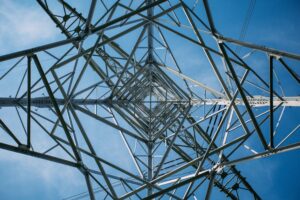The Global Waste Trading Market Is Being Invaded By Robots – And It’s A Good Thing
Sensors, AI, software and robotic arms are being combined to recognize and physically sort waste materials. These conveyor belt systems can operate 24/7, improve the purity of sorted materials, increase productivity, efficiency and the economically viability of recycling.
The first commercially available waste sorting system, launched in 2015 by ZenRobotics, could pick 20 pieces of construction waste per minute. The waste is first sorted into size with larger items loaded onto a 6.5 ft conveyor belt, items are recognized using a laser-based scanning system and sorted with two robot arms.
Multiple innovators have since launched similar systems. For example, AMP Robotics launched its first commercially available system this year, which can pick up to 160 pieces per minute. In addition to increased picking speed, systems can now pick different types of waste e.g. Municipal Solid Waste or E-Waste, while recognition sensors and software can now sort plastics down to a material level. These systems have started to be integrated into large scale material recovery facilities across the globe.
Attractiveness
Before China’s National Sword policy banned some solid waste imports in January, 2018. China had been accepting 56% of the worlds plastics, 95% of the EU’s plastic and 70% of US plastic recycling. The policy aimed to reduce to volume of incoming contaminated and soiled materials, which were overwhelming China’s facilities. Today, China is importing 99% less plastic, but for the rest of the world, more plastics are ending up in landfills, incineration facilities and are overloading domestic recycling facilities. They are also being sent to countries with poor recycling infrastructure. However, this year more countries announced plans to ban waste imports including Malaysia and the Philippines. Imports may soon be a thing of the past.
Robotic sorting offers a cost-effective solution to counter the ship and forget model as systems decrease contamination, reduce the costly labor of sorting and facilitate local recycling solutions. For example, ZenRobotics’ systems increase the diversion rate of recyclables by 20%.
Additionally, the global market for waste sorting is predicted to reach $12.24 billion by 2024, with an annual growth rate of 16.4% between 2019 and 2024.
Business Models
With pressures on waste incumbents to improve the purity of waste streams, corporates are interested in showing a clear waste audit trail to provide reassurance in resale. Waste sorting innovators are offering their sorting technologies to large scale material recovery facilities, with many deploying robotic sorting lines.
Some innovators are directly selling their technology. Sadako have over 40 ‘Max -AI’ units installed across the globe including GreenWaste Recovery in California. Innovators are also offering Robotics as a Service (RaaS) business models, reducing the investment risk for incumbents by avoiding technological obsolescence and high upfront capital expenditures. AMP Robotics, which offers both direct sales and RaaS sales options, carried out the largest deployment of robotic sorting lines in October with 14 AI-guided robots installed at Single Stream Recyclers in Sarasota, Florida.
Some entrepreneurs are looking to further the value proposition of their AI software by creating a database of computer recognized items which help to refine the sorting process. For example, Recyleye have developed waste recognition technology which can efficiently identify items on an object, material, and brand level. We spoke to Founder Victor Dewulf, who created the WasteNet project, accumulating over 300,000 labelled and segmented images, “We need low-cost and ubiquitous traceability to improve the transparency of the recycling sector. If at any point in time we know where and in what quantities all ‘trash’ exists, the notion of waste would no longer exist – only materials in the wrong place. These images help us build a huge database at a very granular level, which will contribute to this goal.”
Competition
There are several firms focused on this market. Canada-based Waste Robotics has developed waste sorting solutions using robotic arms and AI which can autonomously sort organic, construction or recycling waste on a conveyor belt. They recently raised $1.4 million in the latest Growth Equity round from Sustainable Development Technology Canada.
AMP Robotics’ high-speed cortex system and corresponding AMP Neuron AI platform precisely automates waste identification, sorting, and processing while continuously training itself. AMP has raised $16 million in Series A funding. The round was led by Sequoia Capital, with partner Shaun Maguire joining the company’s board. Closed Loop Partners, Congruent Ventures and Sidewalk Infrastructure Partners (SIP) also participated in the round.
Recycleye has developed a proof of concept neural network which identifies and classifies recyclable materials. They are currently working with big to develop brand level recycling encouraging individualized EPR schemes and assigning greater value to waste with advertising opportunities.
Keep an eye on…
Only 9% of all virgin plastics produced are recycled. To encourage greater recycling and reduce original contamination this same AI technology is being implemented for sorting at source, using smart bins. Companies like Bin-e, Recycleye and Alpheus Intelligence have developed and are piloting bins that can identify and autonomously sort waste.
Automation, further government regulations, technology enabling waste audit trails and increasing Extended Producer Responsibly (EPR) will all contribute to creating a profitable global waste trading market which is expected in the 2020s.
Looking for more insight into the future of plastics and recycling? Join us for Cleantech Forum San Francisco on 27-29 January. Our session, Plastic in the 2020s, will introduce you to thought leaders, start-ups and investors looking for solutions to a complex and increasingly important problem.


